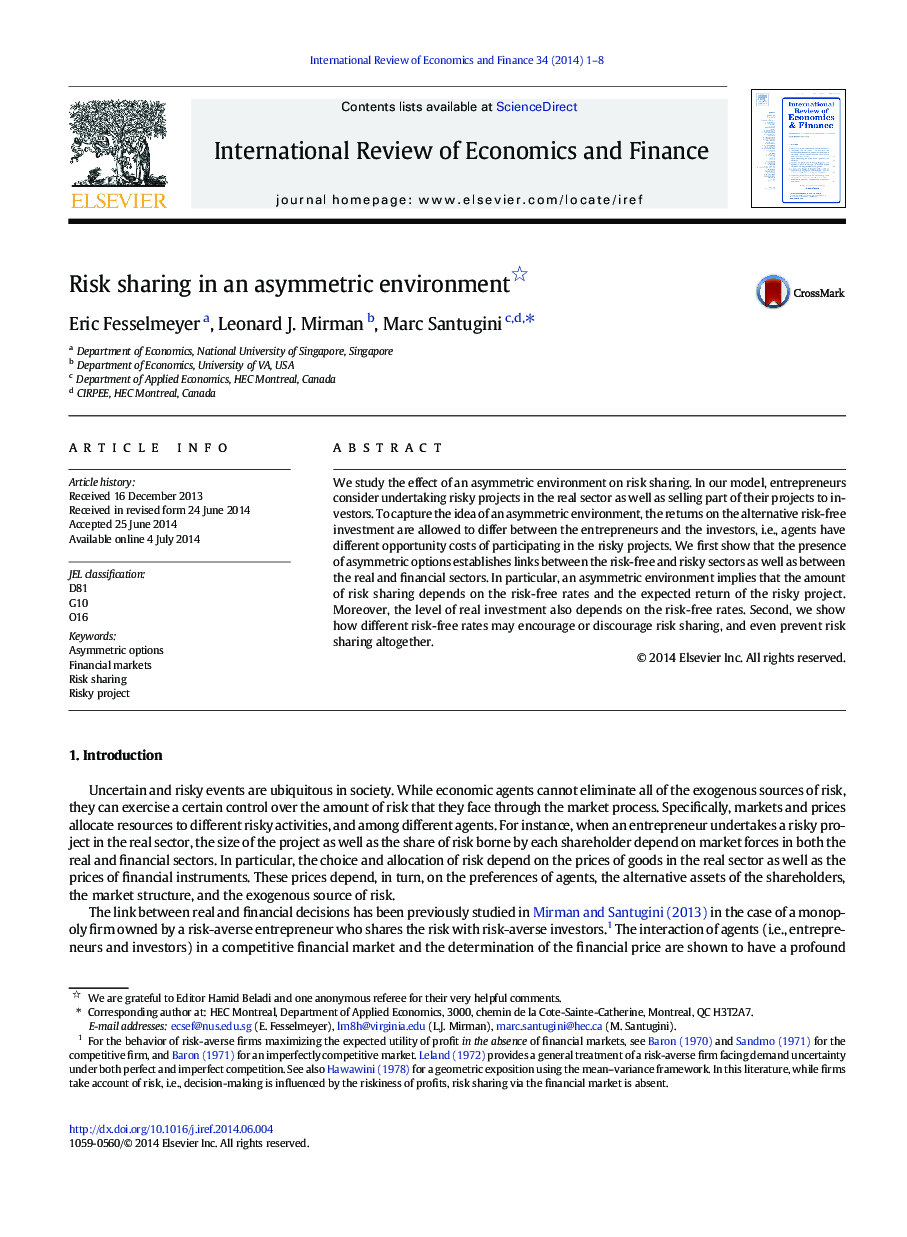| Article ID | Journal | Published Year | Pages | File Type |
|---|---|---|---|---|
| 5083579 | International Review of Economics & Finance | 2014 | 8 Pages |
Abstract
We study the effect of an asymmetric environment on risk sharing. In our model, entrepreneurs consider undertaking risky projects in the real sector as well as selling part of their projects to investors. To capture the idea of an asymmetric environment, the returns on the alternative risk-free investment are allowed to differ between the entrepreneurs and the investors, i.e., agents have different opportunity costs of participating in the risky projects. We first show that the presence of asymmetric options establishes links between the risk-free and risky sectors as well as between the real and financial sectors. In particular, an asymmetric environment implies that the amount of risk sharing depends on the risk-free rates and the expected return of the risky project. Moreover, the level of real investment also depends on the risk-free rates. Second, we show how different risk-free rates may encourage or discourage risk sharing, and even prevent risk sharing altogether.
Related Topics
Social Sciences and Humanities
Economics, Econometrics and Finance
Economics and Econometrics
Authors
Eric Fesselmeyer, Leonard J. Mirman, Marc Santugini,
